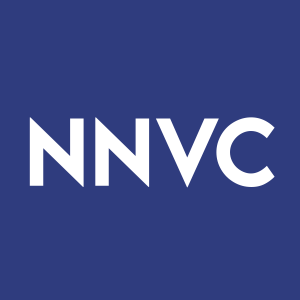NanoViricides Provides an Update on Its Clinical Program and Strategy - NV-387 Could be As Revolutionary as Antibiotics
Rhea-AI Summary
NanoViricides (NYSE:NNVC) provides an update on its clinical program for NV-387, a broad-spectrum antiviral drug. Key points:
- NV-387 mimics sulfated-proteoglycan features used by over 90% of pathogenic human viruses to infect cells
- Showed superiority or equivalence to existing drugs in animal trials against influenza, COVID, RSV, and orthopoxviruses
- Potential market size of $8 billion in 2024, growing to $12 billion in three years for influenza, RSV, and COVID alone
- Company completing database audit of Phase 1a/1b trial and preparing for Phase II trials
- Developing novel adaptive clinical trial design to evaluate effectiveness against multiple respiratory viruses
- Initiating outreach for big pharma collaborations to speed up programs and provide financing
Positive
- NV-387 showed superiority or equivalence to existing drugs in animal trials against multiple viruses
- Potential market size of $8 billion in 2024, growing to $12 billion in three years for influenza, RSV, and COVID alone
- Preparing for Phase II clinical trials to evaluate NV-387's effectiveness as an antiviral in humans
- Developing novel adaptive clinical trial design to evaluate effectiveness against multiple respiratory viruses
- Initiating outreach for big pharma collaborations to speed up programs and provide financing
Negative
- Clinical trials are still in early stages, with Phase 1a/1b results not yet finalized
- No guarantee of successful human clinical development or regulatory approval
- Lengthy and capital-intensive drug development process ahead
News Market Reaction
On the day this news was published, NNVC declined 4.04%, reflecting a moderate negative market reaction.
Data tracked by StockTitan Argus on the day of publication.
SHELTON, CT / ACCESSWIRE / August 8, 2024 / NanoViricides, Inc. (NYSE American:NNVC) (the "Company"), a clinical stage global leader in broad-spectrum antiviral nanomedicines, is providing an update on its clinical program and strategy in this letter to investors.
NanoViricides is developing a unique direct-acting antiviral drug that mimics the host cell and thereby is designed to disable the virus particle from infecting the cell. Our first clinical stage drug, NV-387 is designed to mimic the ubiquitous sulfated-proteoglycan ("S-PG") features that over
The Company has already found that NV-387 was superior to or equivalent to existing drugs in non-clinical animal trials in the case of three major classes of viruses: Influenza, COVID, and RSV; the so-called "triple-demic" respiratory viruses - and even orthopoxviruses (Smallpox/Mpox).
In fact, NV-387 was found to cause complete survival of lethally lung infected mice in an RSV efficacy study, with full protection of lungs, indicating potential cure. There is no currently approved drug for treating RSV infection once it takes place (Ribavirin, a toxic drug approved for RSV as a last resort only, did not lead to protection of the animals).
Such a broad-spectrum of antiviral effectiveness as demonstrated in animal models implies that it is highly unlikely that any given virus can create mutants or variants that are substantially or completely resistant to NV-387. Thus NV-387, unlike the much touted conventional medical countermeasures (MCMs) approaches of vaccines, antibodies, and small molecule antivirals, promises to solve the greatest problem in antiviral therapeutics. The viruses readily escape current MCMs, but are highly unlikely to escape NV-387.
Together, just the three viruses, Influenza, RSV, and COVID, account for over
But the list of S-PG-using viruses is far bigger than these three viruses. It includes Dengue viruses, Zika virus, Yellow Fever virus, West Nile virus, Hendra and Nipah viruses, Echoviruses, CoxSackie virus, Noroviruses, Rabiesvirus, Rhinoviruses, Ebola/Marburg viruses, Foot-and-Mouth-Disease virus (FMDV), Chickengunya virus, and many others that have been causing headlines throughout the world.
The Company therefore plans to continue to investigate the effectiveness of NV-387 against infections by many of these viruses to broaden the scope and applicability of use of NV-387 as a broad-spectrum antiviral, just as antibiotics are used today for bacterial infections.
The Company is in the progress of completing a database audit of its current Phase 1a/1b human clinical trial of NV-387 in healthy subjects in India. We have also asked for an external technical audit of the clinical trial, which is in progress. Once the audits are completed, a data-lock will be effected and then the database will be analyzed statistically to evaluate the effect of NV-387 treatment regarding safety and tolerability of the drug at the different single and multiple dose regimens of NV-387 that were used in the clinical trial. Then a final Phase I clinical trial report will be prepared.
Simultaneously, we are preparing for a Phase II clinical trial with the objective of evaluation of effectiveness of NV-387 as an antiviral in humans. We have initiated the required non-clinical GLP animal studies already, and anticipate the reports on these studies by the end of CY 2025.
We have also started developing different clinical trial strategies for the Phase II. The unique broad-spectrum nature of NV-387 enables the possibility of designing a novel, adaptive clinical trial that could evaluate the effectiveness of NV-387 against multiple respiratory viruses under a single Phase II clinical trial. Such a novel design has not been attempted before, although screening of multiple different drugs in a single clinical trial against the same virus has been performed for Ebola as well as for COVID. Thus, such a clinical trial design could be a major advance in the field of clinical science. More importantly, such a clinical trial could quickly provide information regarding which viruses NV-387 is most effective against, to guide further regulatory clinical development of NV-387 towards approval against one or more indications while minimizing the time and costs to get there.
We have also started designing a traditional Phase II human clinical trial with the ultimate objective of regulatory approval of NV-387 for the treatment of pediatric RSV disease. We plan on a Pre-IND application with the US FDA or equivalent advice-seeking applications in other regulatory regions to guide further development of our clinical program for NV-387.
We have made tremendous progress in FY 2024 ending in June 30, 2024. We anticipate substantial further progress in the ensuing year building on our accomplishments, leading towards commercialization and market entry of our drug products. We have also recently initiated active outreach for the purpose of obtaining big pharma collaborations for our programs that may help speed out programs and also provide financing.
NanoViricides, Inc. (the "Company") ( www.nanoviricides.com ) is a development stage company that is creating special purpose nanomaterials for antiviral therapy. The Company's novel nanoviricide® class of drug candidates are designed to specifically attack enveloped virus particles and to dismantle them. Our lead drug candidate is NV-387 for the treatment of RSV, COVID-19, Long COVID, Influenza, and other respiratory viral infections. Our other advanced candidate is NV-HHV-1 for the treatment of Shingles (previously referred to as NV-HHV-101). The Company cannot project an exact date for filing an IND for any of its drugs because of dependence on a number of external collaborators and consultants. The Company is currently focused on advancing NV-387 into Phase II human clinical trials.
NV-CoV-2 (API NV-387) is our nanoviricide drug candidate for COVID-19 that does not encapsulate remdesivir. NV-CoV-2-R is our other drug candidate for COVID-19 that is made up of NV-387 with remdesivir encapsulated within its polymeric micelles. The Company believes that since remdesivir is already US FDA approved, our drug candidate encapsulating remdesivir is likely to be an approvable drug, if safety is comparable. Remdesivir is developed by Gilead. The Company has developed both of its own drug candidates NV-CoV-2 and NV-CoV-2-R independently.
The Company is also developing drugs against a number of viral diseases including oral and genital Herpes, viral diseases of the eye including EKC and herpes keratitis, H1N1 swine flu, H5N1 bird flu, seasonal Influenza, HIV, Hepatitis C, Rabies, Dengue fever, and Ebola virus, among others. NanoViricides' platform technology and programs are based on the TheraCour® nanomedicine technology of TheraCour, which TheraCour licenses from AllExcel. NanoViricides holds a worldwide exclusive perpetual license to this technology for several drugs with specific targeting mechanisms in perpetuity for the treatment of the following human viral diseases: Human Immunodeficiency Virus (HIV/AIDS), Hepatitis B Virus (HBV), Hepatitis C Virus (HCV), Rabies, Herpes Simplex Virus (HSV-1 and HSV-2), Varicella-Zoster Virus (VZV), Influenza and Asian Bird Flu Virus, Dengue viruses, Japanese Encephalitis virus, West Nile Virus, Ebola/Marburg viruses, and certain Coronaviruses. The Company intends to obtain a license for poxviruses and/or enteroviruses if the initial research is successful. The Company's technology is based on broad, exclusive, sub-licensable, field licenses to drugs developed in these areas from TheraCour Pharma, Inc. The Company's business model is based on licensing technology from TheraCour Pharma Inc. for specific application verticals of specific viruses, as established at its foundation in 2005.
As is customary, the Company must state the risk factor that the path to typical drug development of any pharmaceutical product is extremely lengthy and requires substantial capital. As with any drug development efforts by any company, there can be no assurance at this time that any of the Company's pharmaceutical candidates would show sufficient effectiveness and safety for human clinical development. Further, there can be no assurance at this time that successful results against coronavirus in our lab will lead to successful clinical trials or a successful pharmaceutical product.
This press release contains forward-looking statements that reflect the Company's current expectation regarding future events. Actual events could differ materially and substantially from those projected herein and depend on a number of factors. Certain statements in this release, and other written or oral statements made by NanoViricides, Inc. are "forward-looking statements" within the meaning of Section 27A of the Securities Act of 1933 and Section 21E of the Securities Exchange Act of 1934. You should not place undue reliance on forward-looking statements since they involve known and unknown risks, uncertainties and other factors which are, in some cases, beyond the Company's control and which could, and likely will, materially affect actual results, levels of activity, performance or achievements. The Company assumes no obligation to publicly update or revise these forward-looking statements for any reason, or to update the reasons actual results could differ materially from those anticipated in these forward-looking statements, even if new information becomes available in the future. Important factors that could cause actual results to differ materially from the company's expectations include, but are not limited to, those factors that are disclosed under the heading "Risk Factors" and elsewhere in documents filed by the company from time to time with the United States Securities and Exchange Commission and other regulatory authorities. Although it is not possible to predict or identify all such factors, they may include the following: demonstration and proof of principle in preclinical trials that a nanoviricide is safe and effective; successful development of our product candidates; our ability to seek and obtain regulatory approvals, including with respect to the indications we are seeking; the successful commercialization of our product candidates; and market acceptance of our products.
The phrases "safety", "effectiveness" and equivalent phrases as used in this press release refer to research findings including clinical trials as the customary research usage and do not indicate evaluation of safety or effectiveness by the US FDA.
FDA refers to US Food and Drug Administration. IND application refers to "Investigational New Drug" application. cGMP refers to current Good Manufacturing Practices. CMC refers to "Chemistry, Manufacture, and Controls". CHMP refers to the Committee for Medicinal Products for Human Use, which is the European Medicines Agency's (EMA) committee responsible for human medicines. API stands for "Active Pharmaceutical Ingredient".
Contact:
NanoViricides, Inc.
info@nanoviricides.com
Public Relations Contact:
ir@nanoviricides.com
SOURCE: NanoViricides, Inc.
View the original press release on accesswire.com







